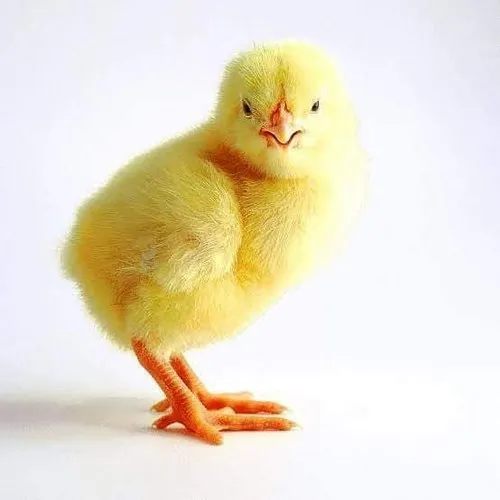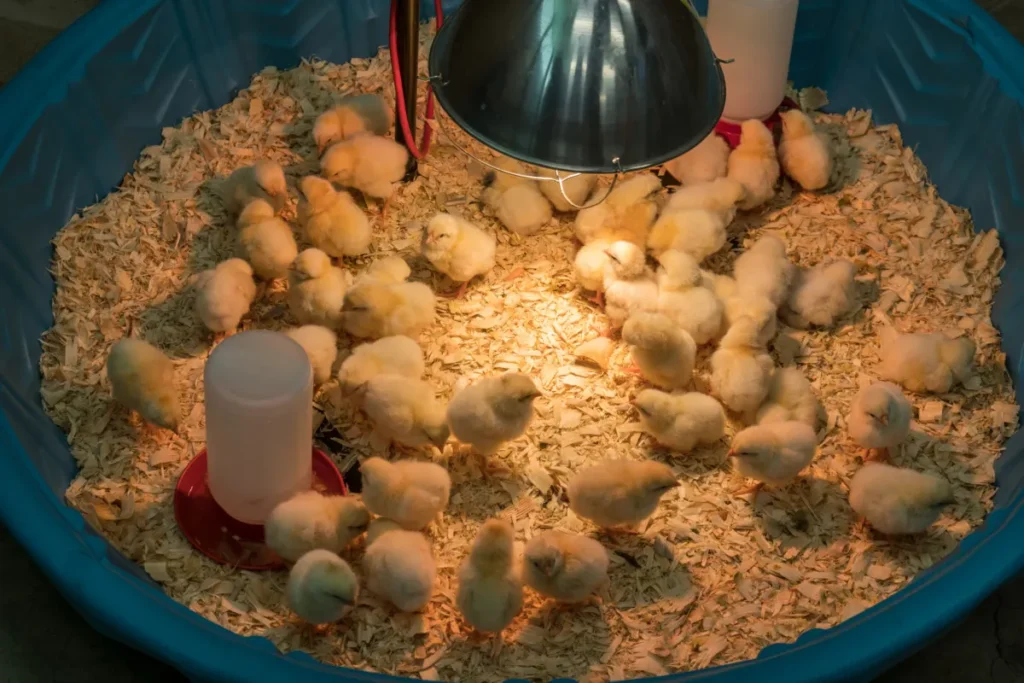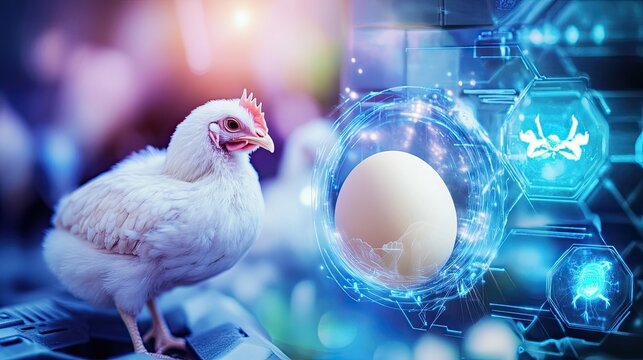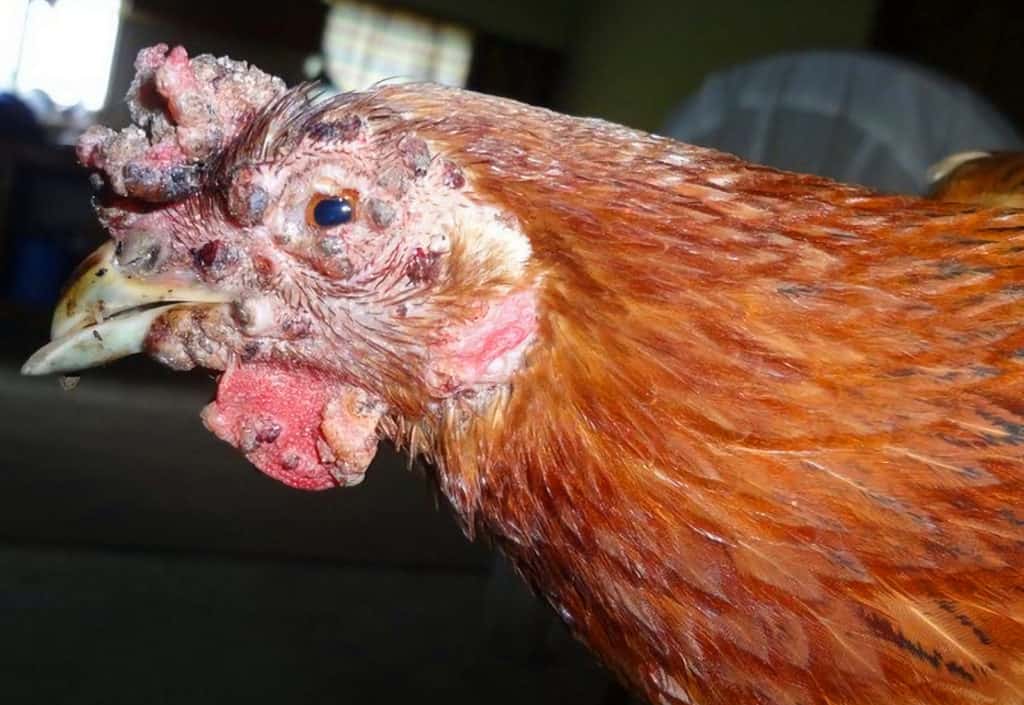Poultry production in the World began in 1960.
विश्व में पोल्ट्री उत्पादन 1960 में शुरू हुआ।
Poultry
Poultry Production farming is a process in which we raise chickens for our benefit. From there we can get meat and eggs. This includes chickens, pigeons, ducks, etc.
मुर्गीपालन
मुर्गी पालन वह प्रक्रिया है जिसमें हम उद्देश्यपूर्ण ढंग से अपने लाभ के लिए मुर्गियाँ पालते हैं। जिससे हमें मांस और अंडे मिल सकते हैं. इसमें मुर्गी, कबूतर, बत्तख आदि शामिल हैं।
Grant Parent (GP)
For meat:
Parent -> Bailor-> Meat
For eggs:
Layer -> Breeder -> Eggs
Types of Eggs
There are two types of eggs
1: Fertile eggs
2: Table eggs
Fertile eggs
Fertile eggs are those eggs that have the potential to produce chicks. These can also be called fertile eggs.
उपजाऊ अंडे
एक निषेचित अंडा एक निषेचित अंडा है। जिसमें चूजों को जन्म देने की क्षमता होती है। इसे उपजाऊ अंडे भी कहा जा सकता है।
Table eggs
Which has the ability to hatch chicks. They can eat farts.
टेबल अंडे
जिसमें चूज़े अंडे देने में सक्षम होते हैं। फरफ खा सकते हैं.
Disease Read: Hydro
One-Day-Old Chick
- The shed should be completely cleaned.
- The temperature should be even.
- The height should be adequately even.
- Water and food should be given according to the number of chicks.
- The floor should be covered with straw.
- Chick guards should be arranged.

एने-डी-वाल्ड चाक
- शेड को अच्छी तरह से साफ किया जाना चाहिए।
- तापमान बराबर होना चाहिए.
- लंबाई ठीक से बराबर होनी चाहिए.
- चूजों के अनुसार पानी एवं चारा देना चाहिए।
- फर्श के निचले हिस्से में ब्रादाह बिछाया जाना चाहिए।
- चेक गार्ड की व्यवस्था की जाए।
Brooding Chicks
Poultry production brooding is the process of raising young chicks in the same way that a hen raises her own young. Brooding lasts for as long as the chicks need the necessary warmth. This usually lasts for five to eight weeks.

सोच
ब्रूडिंग का मतलब है छोटे चूजों को उसी तरह से पालना जैसे मुर्गी अपने चूजों को पालती है। तब तक ब्रूडिंग होती रहती है. जब चूजों को इष्टतम तापमान की आवश्यकता होती है। ये आमतौर पर पांच से आठ सप्ताह तक चलते हैं।
Poultry production Temperature
The chicks are heated by electricity, gas, or oil. This is used to heat the brood. The temperature of the brooding area should be 90 to 95 degrees Fahrenheit for the first week. As the chicks grow, they are reduced by five degrees Fahrenheit every week until they reach 75 degrees Fahrenheit. This temperature should not be lower than 2 inches above the electric heater and 6 inches outside the brooder. The temperature can usually be estimated by looking at the chicks. If the chicks are huddled together under the brooder, it means that the temperature is low. And if they are huddled in a corner away from the brooder, it means that the temperature is high. In this case, the temperature should be lowered. A sign of the appropriate temperature is that the chicks are scattered in a common area. (This chick is in the comfort zone).
| Chick Age | Brooding Temperature |
| 0 to 1 week | 93° to 95°F |
| 1 to 2 weeks | 88° to 90°F |
| 2 to 3 weeks | 83° to 85°F |
| 3 to 4 weeks | 78° to 80°F |
| 4 to 5 weeks | 75°F |
| 5 to 6 weeks | 70°F |
| 6 weeks and above | 50° to 70°F |

तापमान
चूजों को बिजली, बिजली, गैस या तेल से गर्म किया जाता है। इससे बच्चे पैदा होते हैं। अगले सप्ताह के लिए ब्रूडिंग क्षेत्र का तापमान 90 से 95 डिग्री फ़ारेनहाइट होना चाहिए। जैसे-जैसे चूजे बड़े होते हैं, तापमान को प्रति सप्ताह 5 डिग्री फ़ारेनहाइट की दर से कम करें, तापमान को 75 डिग्री फ़ारेनहाइट तक न गिराएँ। आमतौर पर चूजों की हालत देखकर भी तापमान का अंदाजा लगाया जा सकता है। यदि चूजे ब्रूडर के नीचे छिपे हुए हैं, तो इसका मतलब है कि तापमान कम है। और यदि वे ब्रूडर से दूर कोने में एकत्र हैं, तो इसका मतलब है कि तापमान अधिक है, इसलिए उसी स्थिति में तापमान कम कर दें। यह उचित तापमान का संकेत है। कि चूज़े एक आम जगह पर बिखरे हुए हैं। (विद्रोही लड़की आराम क्षेत्र में है)।



